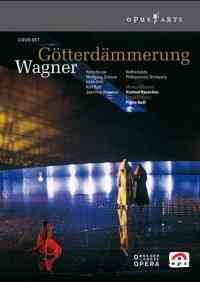
Wagner: Götterdämmerung
Heinz Kruse, Wolfgang Schöne, Henk Smit, Kurt Rydl, Jeannine Altmeyer, Eva-Maria Bundschuh, Anne Gjevang, Hebe Dijkstra, Irmgard Vifsmaier, Kirsi Tiihonen, Gabriele Fontana, Hanna Schaer & Catherine Keen
Netherlands Philharmonic Orchestra, Hartmut Haenchen
Pierre Audi's production remains boldly modern, but more respectful of Wagner's conception than most these days. Haenchen's conducting, inspired by the latest research is still briskly dramatic…... — More…
Contents
Wagner: Götterdämmerung
- Stage Director Pierre Audi
- Heinz Kruse, Wolfgang Schöne, Henk Smit, Kurt Rydl, Jeannine Altmeyer, Eva-Maria Bundschuh, Anne Gjevang, Hebe Dijkstra, Irmgard Vifsmaier, Kirsi Tiihonen, Gabriele Fontana, Hanna Schaer & Catherine Keen
- Netherlands Philharmonic Orchestra
- Hartmut Haenchen


